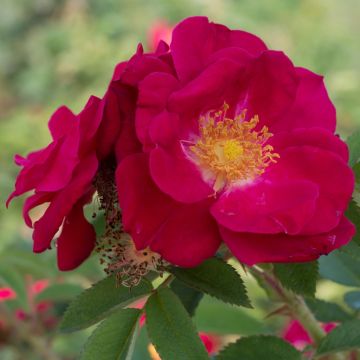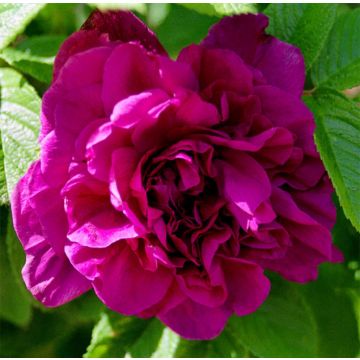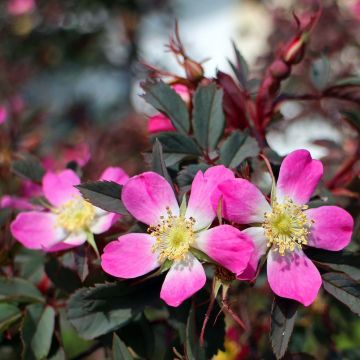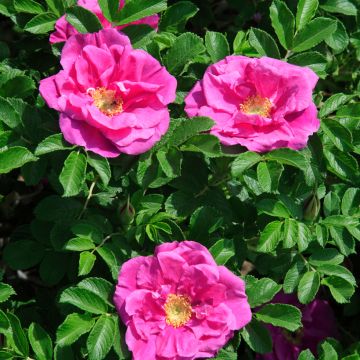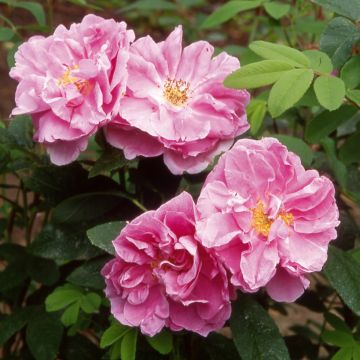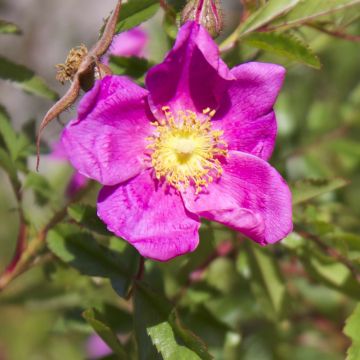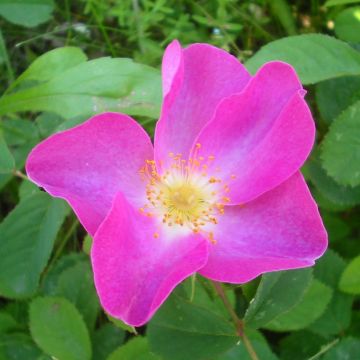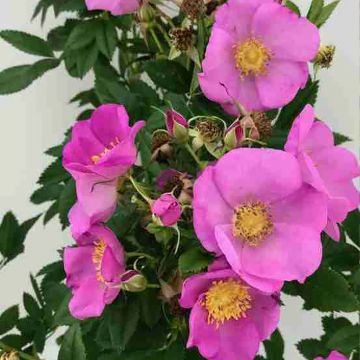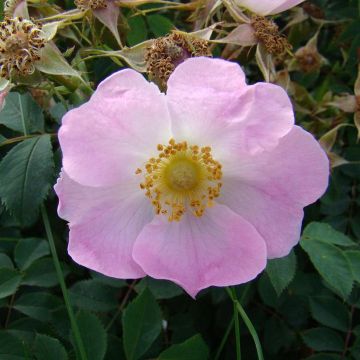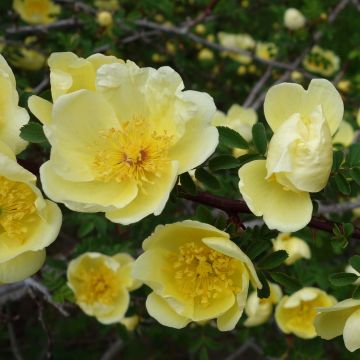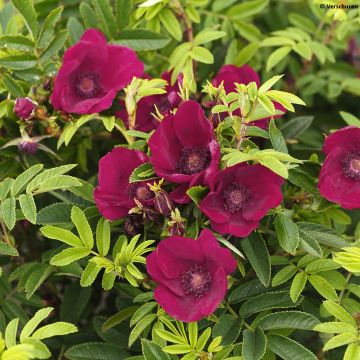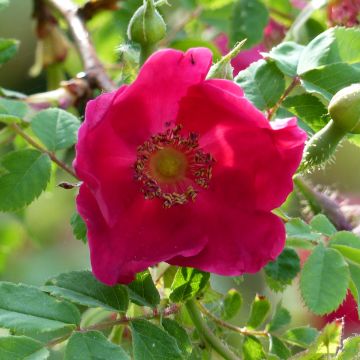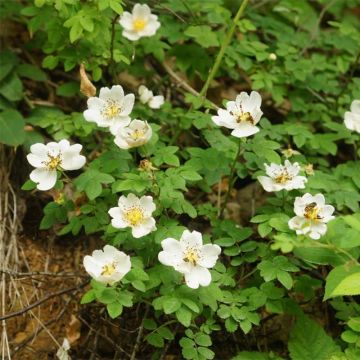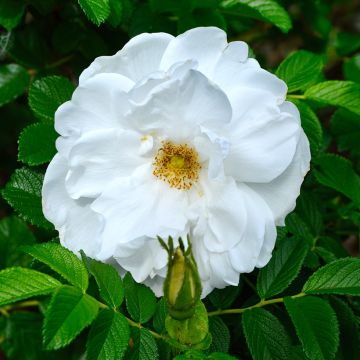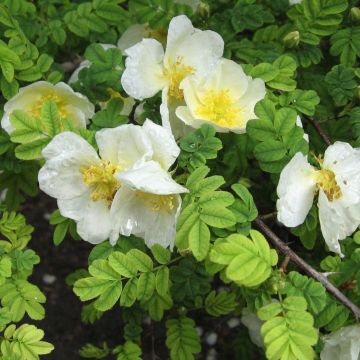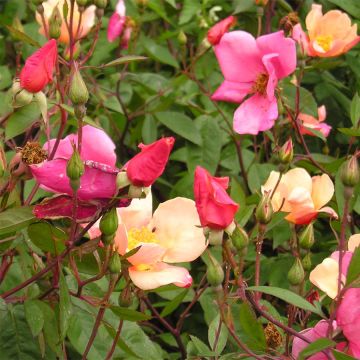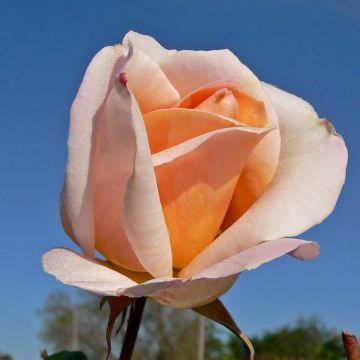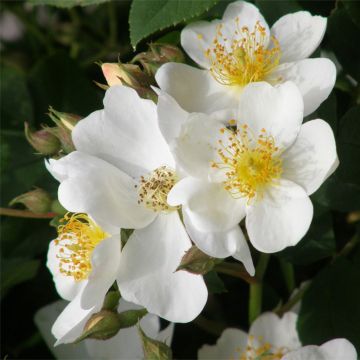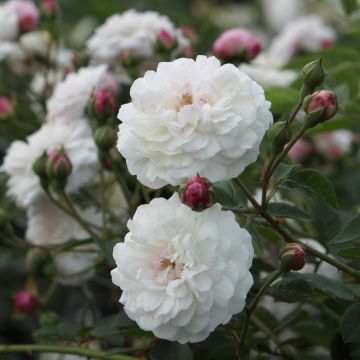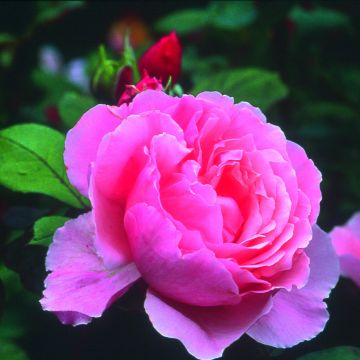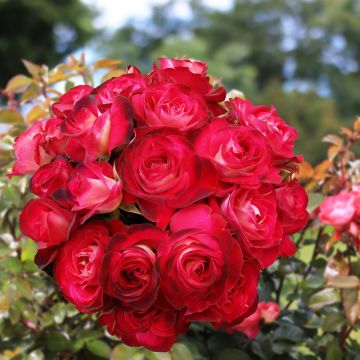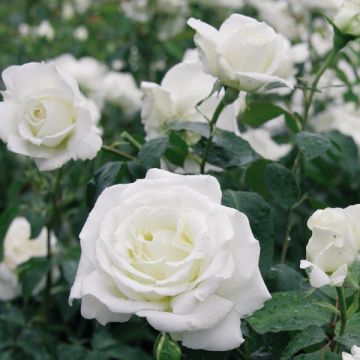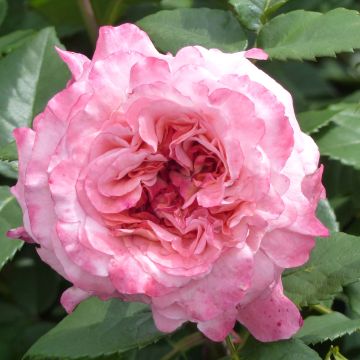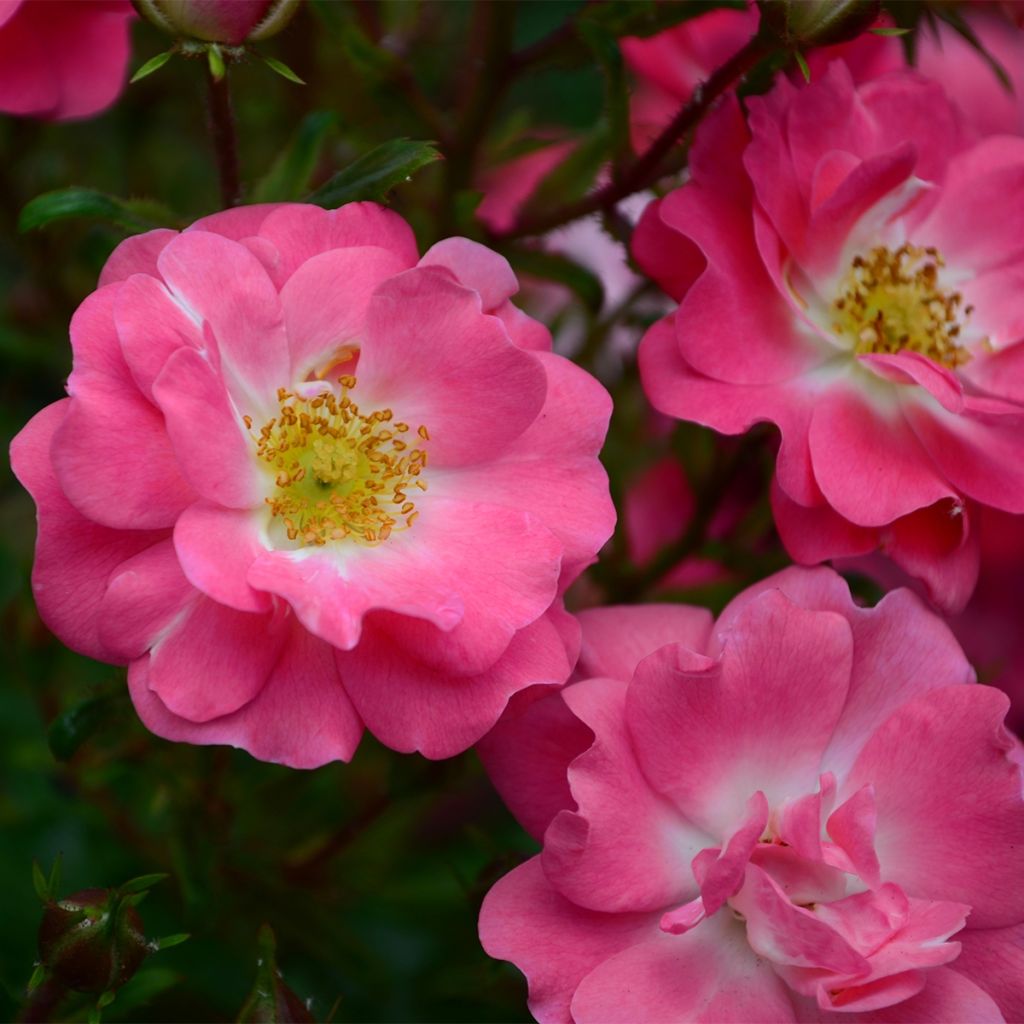

Rosier botanique - Rosa californica Plena
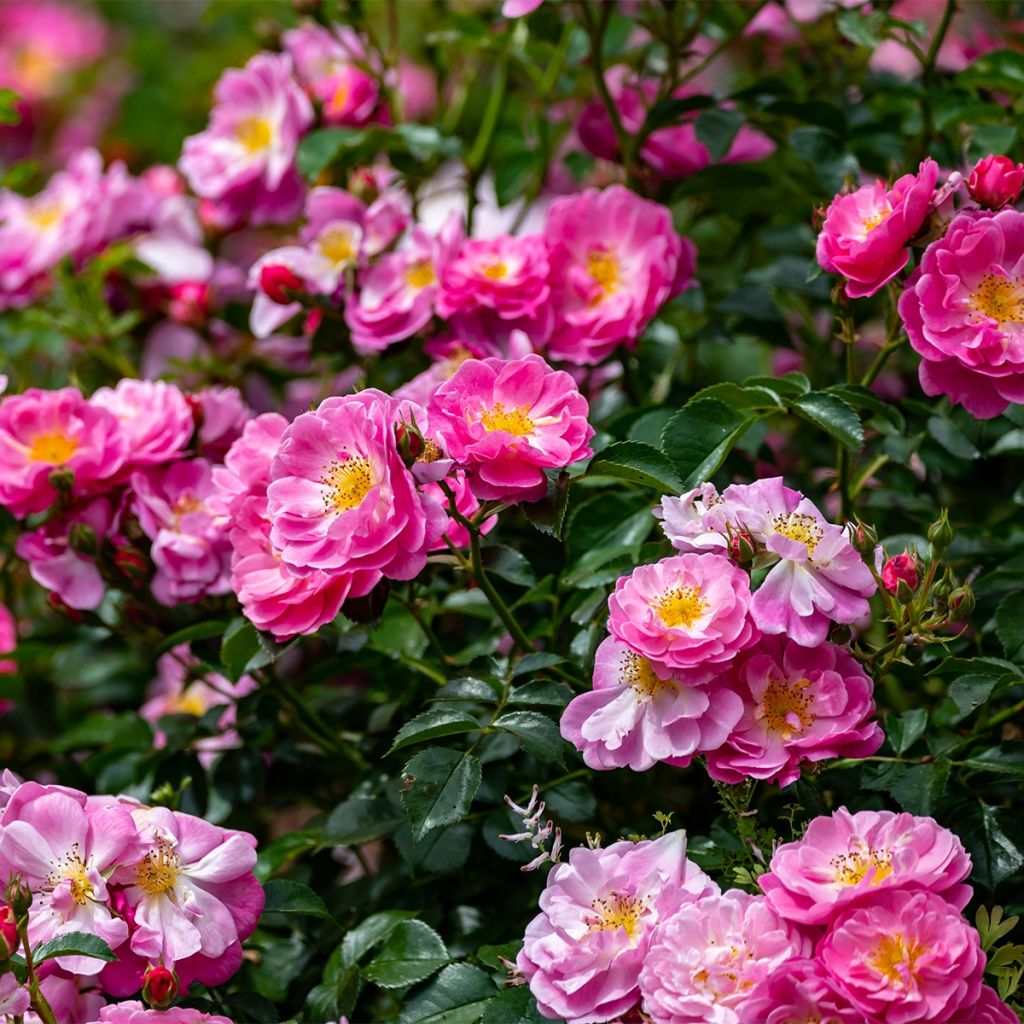

Rosier botanique - Rosa californica Plena
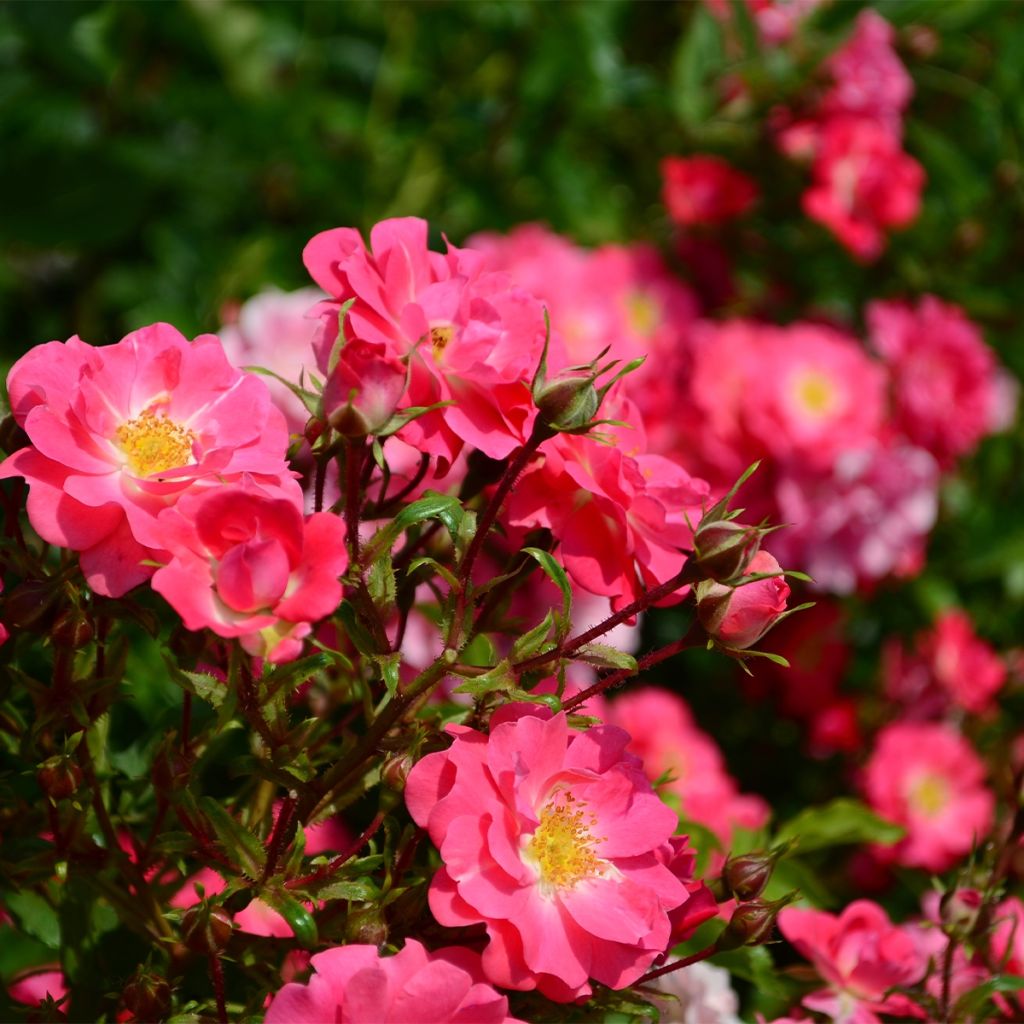

Rosier botanique - Rosa californica Plena
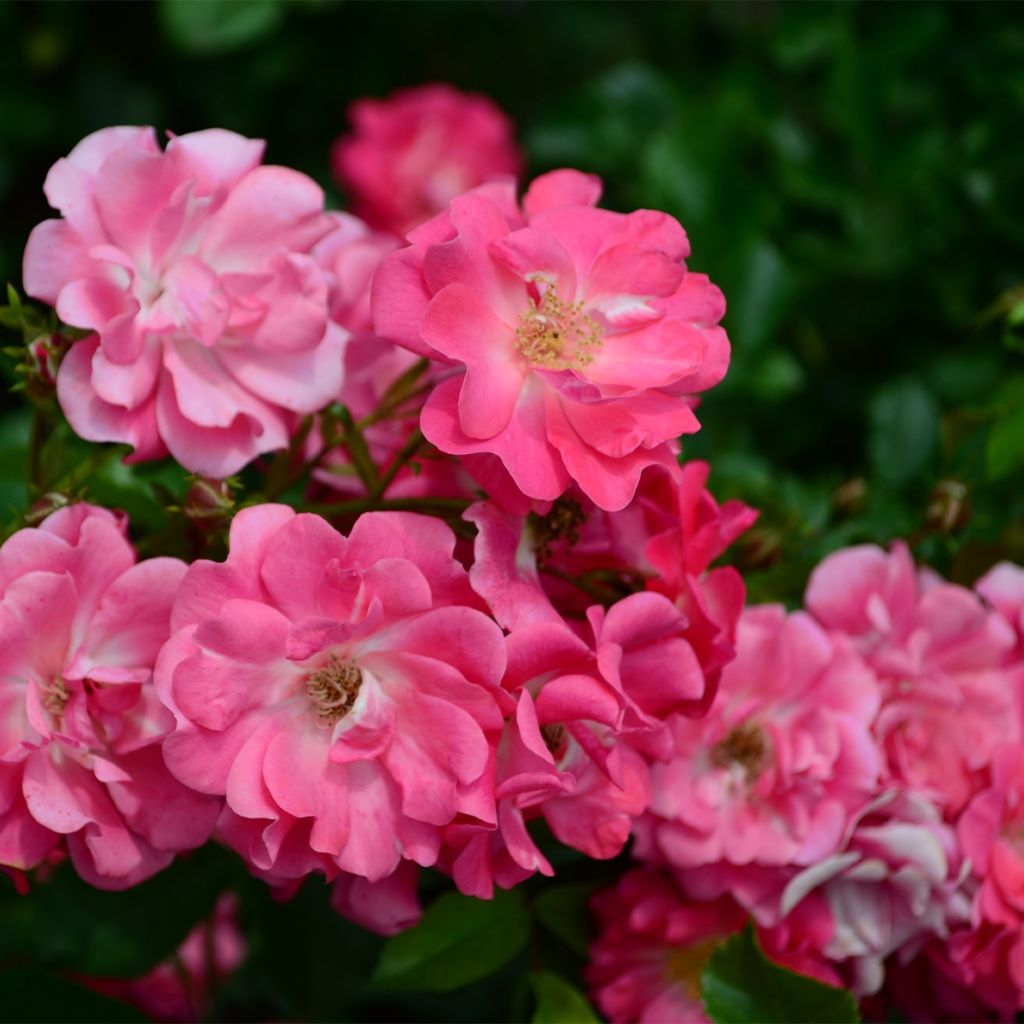

Rosier botanique - Rosa californica Plena
Rosa californica Plena
Rosa californica Plena
An extraordinary rose that offers abundant flowering. Placed at the back of the garden, the colour of its flowers and its majestic trailing habit are first-class assets! Analysis and revision: An extraordinary rose that offers abundant flowering. Placed at the back of the garden, the colour of its flowers and its majestic trailing habit are first-class assets! In terms of language and grammar, the translation is accurate and there are no spelling errors. The tone and meaning of the original text have been preserved. Well done!
Marie, 23/05/2023
Why not try an alternative variety in stock?
View all →This plant carries a 24 months recovery warranty
More information
We guarantee the quality of our plants for a full growing cycle, and will replace at our expense any plant that fails to recover under normal climatic and planting conditions.
From €5.90 for pickup delivery and €6.90 for home delivery
Express home delivery from €8.90.
Delivery to Corse prohibited: UE law prohibits the import of this plant from mainland France to Corse as part of the fight against Xylella fastidiosa. Please accept our sincere apologies.
More information

Does this plant fit my garden?
Set up your Plantfit profile →
Description
Rosa californica Plena is simply sensational, it is a direct descendant of a robust Californian botanical rose. It is more than a rose, more than a bush, capable of forming a true little tree with a flexible habit and branches trailing down to the ground in cascades. In summer its unique, generous flowering, transforms its branches into garlands of small semi-double roses, half-pink and half-purple and pleasantly scented. It has inherited robust health and astonishing adaptability to soil and climate from its American ancestor. You can grow it from the north to south of our country, keeping in mind that it needs space; as a centerpiece in a modest-sized garden, as a backdrop for large flowerbeds, or in an informal hedge.
Rosa x californica Plena is a natural hybrid, with somewhat obscure origins. This rose is similar to the variety 'Theano', introduced on the market in 1894 by Geschwind. Some specialists believe that it is the result of crossing R.californica and the 'Crimson Rambler' rose. However, when the two hybrids grow side by side, a difference in the flower pattern clearly appears. Whatever the case may be, the 'Plena' form has Rosa californica as its parent, native to the Gulf of California, Oregon, and the northern part of Mexico. It is found in its original regions growing in canyons, clinging to rocky slopes bordering watercourses, with its powerful roots reaching deep to draw water. The 'Plena' form, often planted in English gardens, has received the Royal Horticultural Society's Award of Garden Merit.
It is a large spiny bush with a wide and rounded habit, a little taller than wide, and with dark brown trailing branches. It easily reaches 2.5m (8ft) high (or even more than 3m (10ft)) and a width of 2m (7ft), with rapid growth. Its deciduous foliage is a somewhat greyish green, fairly light, and more or less hairy. It is completely disease-free. Flowering takes place in summer, from June to July depending on the climate. Along the branches, 4cm (2in), semi-double flowers bloom in the shape of well-opened cups, composed of 20 to 39 petals. The almost white centre of the corolla is occupied by a crown of golden yellow stamens. Their flowers are a deep, vibrant pink, and they have a pleasant, light fragrance. Flowering lasts for several weeks, with the small flower clusters constantly developing new buds. This variety is undemanding in terms of soil and grows very well on its own roots.
Rosa californica Plena is a romantic rose bush, exuberant yet pragmatic and very sturdy. It does not mind cold or heat and only needs sun and a soil deep enough to find the moisture it needs. It deserves to be planted most regions, in a medium-sized or large garden. It can be planted in a large bed of flowering shrubs or a countryside hedge, alongside Rosa complicata, which is easy to grow, Rosa Hansa, Rosa rubiginosa (Sweetbriar) or Rosa rubrifolia with purple leaves. Many other associations are possible, with easy shrubs like serviceberries, Elaeagnus Zempin, deciduous euonymus, white spireas, ornamental fruit trees (Prunus, Malus, Pyrus), and viburnums. Its graceful habit also allows it to be used as a standalone specimen on a lawn, where it will provide a spectacle from spring to autumn. Finally, it is a very healthy shrub, requiring no maintenance once well established.
Botanical roses and their direct hybrids are not widely loved, but they should be, especially in difficult soils or climates: these roses are not only the ancestors of modern roses, but also generally more robust and very reliable.
Report an error about the product description
Rosa californica Plena in pictures
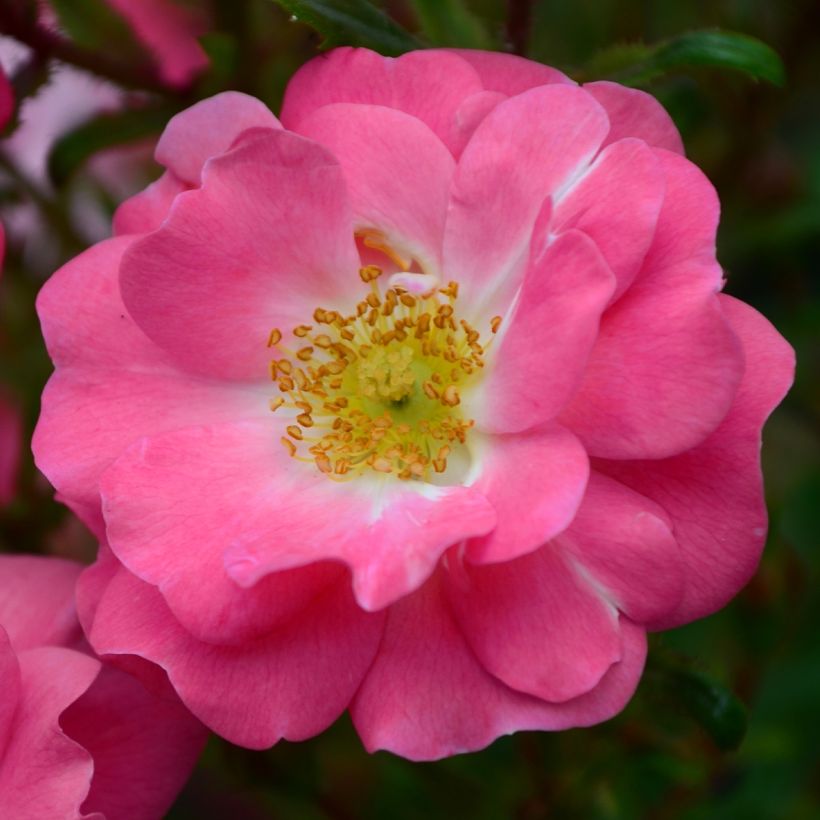

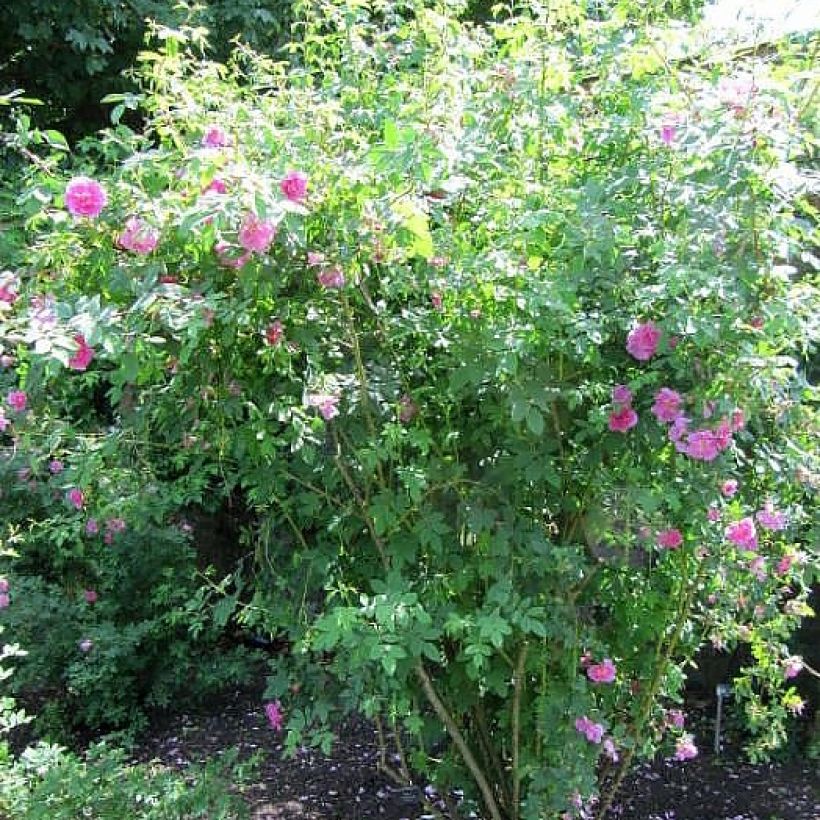

Plant habit
Flowering
Foliage
Botanical data
Rosa
californica
Plena
Rosaceae
North America
Other Botanical or wild Roses
Planting and care
Rosa californica Plen, like all californica hybrids, is undemanding on the nature of the soil, as long as it is sufficiently deep and moist. It is hardy to at least -15°C (5°F). It tolerates limestone and clay soils fairly well, but not waterlogged soils. If your soil is very heavy, incorporate leaf compost, river sand, gravel or pumice into the planting hole (40 cm (16in) in all directions) with your garden soil. It thrives in sufficiently sunny regions, is not susceptible to diseases, and can withstand moderate drought once well established. It adapts to all gardens, as long as it is planted well. Plant it in ordinary, well-worked and properly drained soil, and in a sunny or partially shaded position, which it tolerates very well in hot climates. Remove dead wood in winter. Avoid severe pruning that disfigures the attractive shape of this slightly wild bush.
Planting period
Intended location
Care
-
, onOrder confirmed
Reply from on Promesse de fleurs
Fragrant Roses
Haven't found what you were looking for?
Hardiness is the lowest winter temperature a plant can endure without suffering serious damage or even dying. However, hardiness is affected by location (a sheltered area, such as a patio), protection (winter cover) and soil type (hardiness is improved by well-drained soil).

Photo Sharing Terms & Conditions
In order to encourage gardeners to interact and share their experiences, Promesse de fleurs offers various media enabling content to be uploaded onto its Site - in particular via the ‘Photo sharing’ module.
The User agrees to refrain from:
- Posting any content that is illegal, prejudicial, insulting, racist, inciteful to hatred, revisionist, contrary to public decency, that infringes on privacy or on the privacy rights of third parties, in particular the publicity rights of persons and goods, intellectual property rights, or the right to privacy.
- Submitting content on behalf of a third party;
- Impersonate the identity of a third party and/or publish any personal information about a third party;
In general, the User undertakes to refrain from any unethical behaviour.
All Content (in particular text, comments, files, images, photos, videos, creative works, etc.), which may be subject to property or intellectual property rights, image or other private rights, shall remain the property of the User, subject to the limited rights granted by the terms of the licence granted by Promesse de fleurs as stated below. Users are at liberty to publish or not to publish such Content on the Site, notably via the ‘Photo Sharing’ facility, and accept that this Content shall be made public and freely accessible, notably on the Internet.
Users further acknowledge, undertake to have ,and guarantee that they hold all necessary rights and permissions to publish such material on the Site, in particular with regard to the legislation in force pertaining to any privacy, property, intellectual property, image, or contractual rights, or rights of any other nature. By publishing such Content on the Site, Users acknowledge accepting full liability as publishers of the Content within the meaning of the law, and grant Promesse de fleurs, free of charge, an inclusive, worldwide licence for the said Content for the entire duration of its publication, including all reproduction, representation, up/downloading, displaying, performing, transmission, and storage rights.
Users also grant permission for their name to be linked to the Content and accept that this link may not always be made available.
By engaging in posting material, Users consent to their Content becoming automatically accessible on the Internet, in particular on other sites and/or blogs and/or web pages of the Promesse de fleurs site, including in particular social pages and the Promesse de fleurs catalogue.
Users may secure the removal of entrusted content free of charge by issuing a simple request via our contact form.
The flowering period indicated on our website applies to countries and regions located in USDA zone 8 (France, the United Kingdom, Ireland, the Netherlands, etc.)
It will vary according to where you live:
- In zones 9 to 10 (Italy, Spain, Greece, etc.), flowering will occur about 2 to 4 weeks earlier.
- In zones 6 to 7 (Germany, Poland, Slovenia, and lower mountainous regions), flowering will be delayed by 2 to 3 weeks.
- In zone 5 (Central Europe, Scandinavia), blooming will be delayed by 3 to 5 weeks.
In temperate climates, pruning of spring-flowering shrubs (forsythia, spireas, etc.) should be done just after flowering.
Pruning of summer-flowering shrubs (Indian Lilac, Perovskia, etc.) can be done in winter or spring.
In cold regions as well as with frost-sensitive plants, avoid pruning too early when severe frosts may still occur.
The planting period indicated on our website applies to countries and regions located in USDA zone 8 (France, United Kingdom, Ireland, Netherlands).
It will vary according to where you live:
- In Mediterranean zones (Marseille, Madrid, Milan, etc.), autumn and winter are the best planting periods.
- In continental zones (Strasbourg, Munich, Vienna, etc.), delay planting by 2 to 3 weeks in spring and bring it forward by 2 to 4 weeks in autumn.
- In mountainous regions (the Alps, Pyrenees, Carpathians, etc.), it is best to plant in late spring (May-June) or late summer (August-September).
The harvesting period indicated on our website applies to countries and regions in USDA zone 8 (France, England, Ireland, the Netherlands).
In colder areas (Scandinavia, Poland, Austria...) fruit and vegetable harvests are likely to be delayed by 3-4 weeks.
In warmer areas (Italy, Spain, Greece, etc.), harvesting will probably take place earlier, depending on weather conditions.
The sowing periods indicated on our website apply to countries and regions within USDA Zone 8 (France, UK, Ireland, Netherlands).
In colder areas (Scandinavia, Poland, Austria...), delay any outdoor sowing by 3-4 weeks, or sow under glass.
In warmer climes (Italy, Spain, Greece, etc.), bring outdoor sowing forward by a few weeks.

































